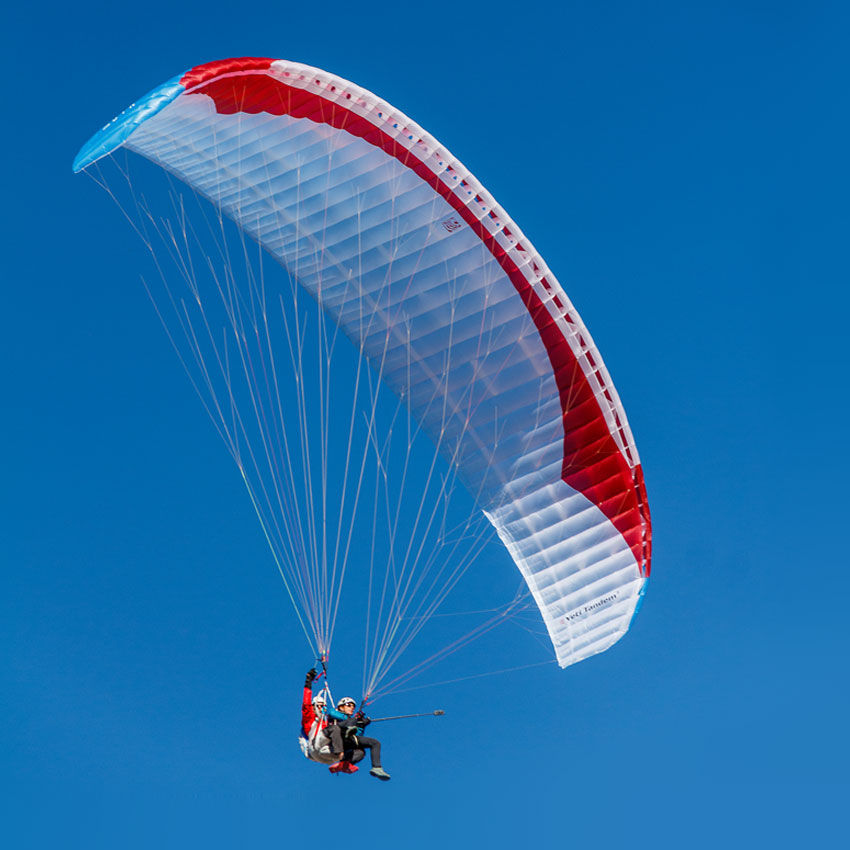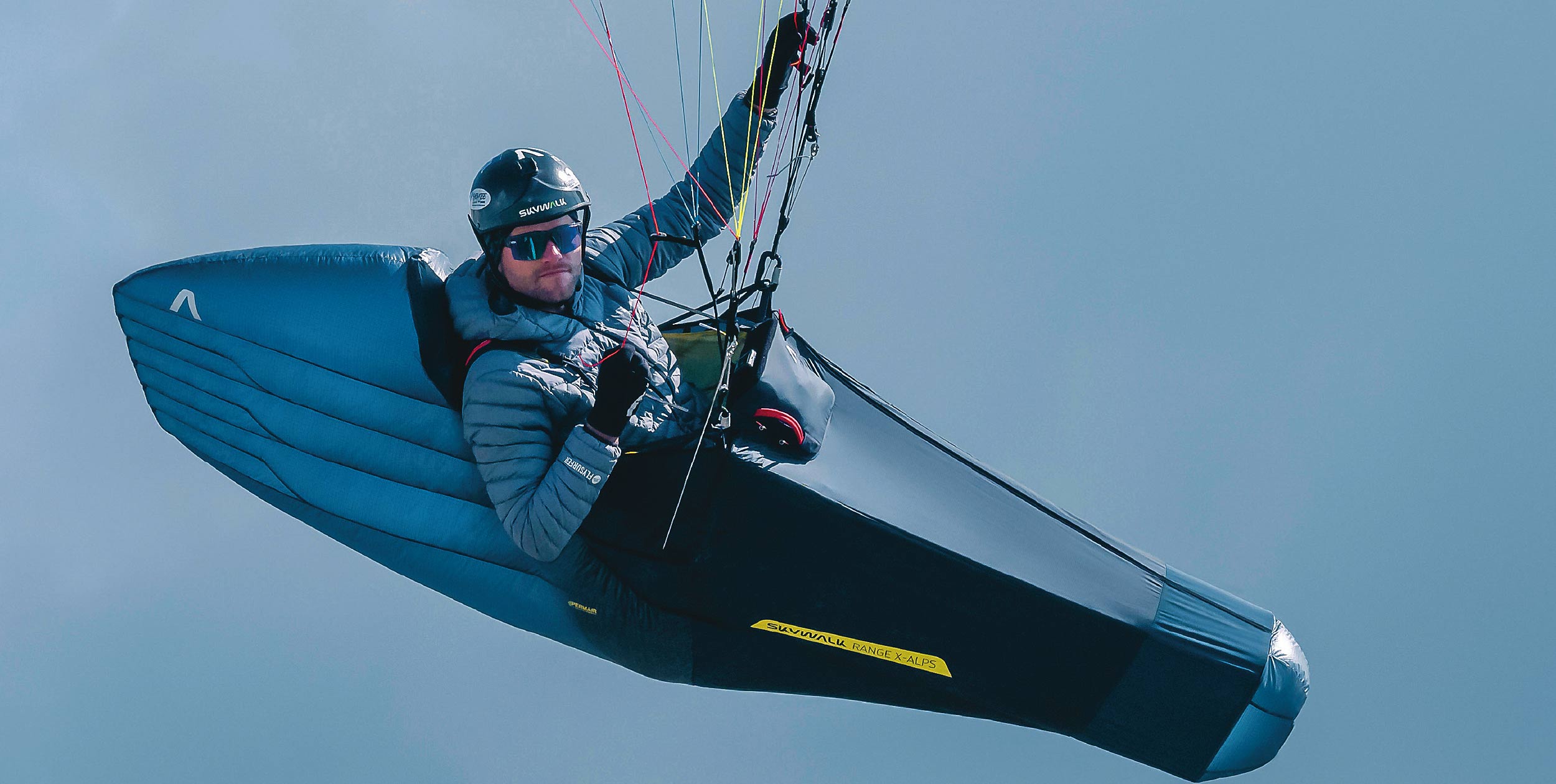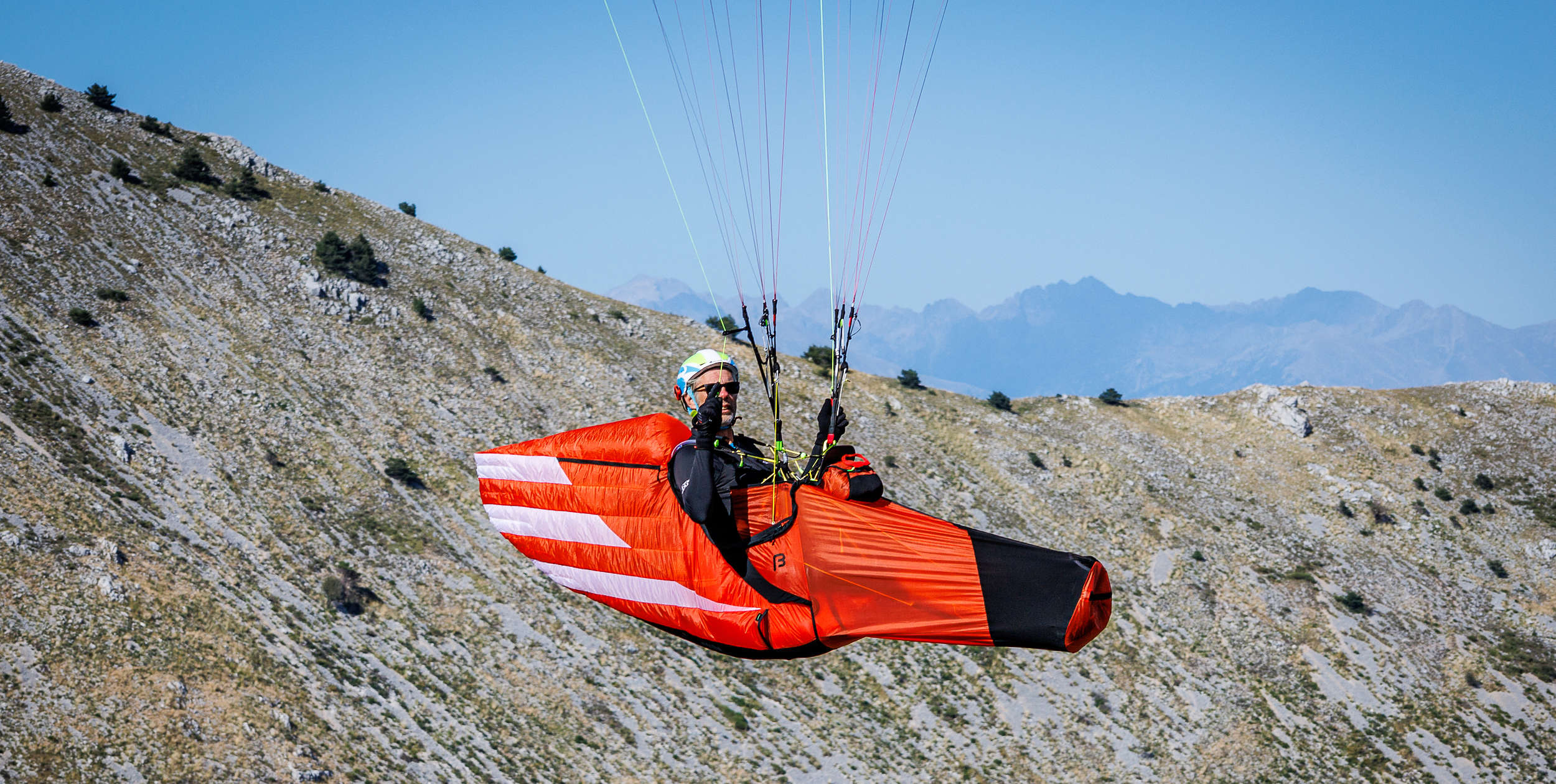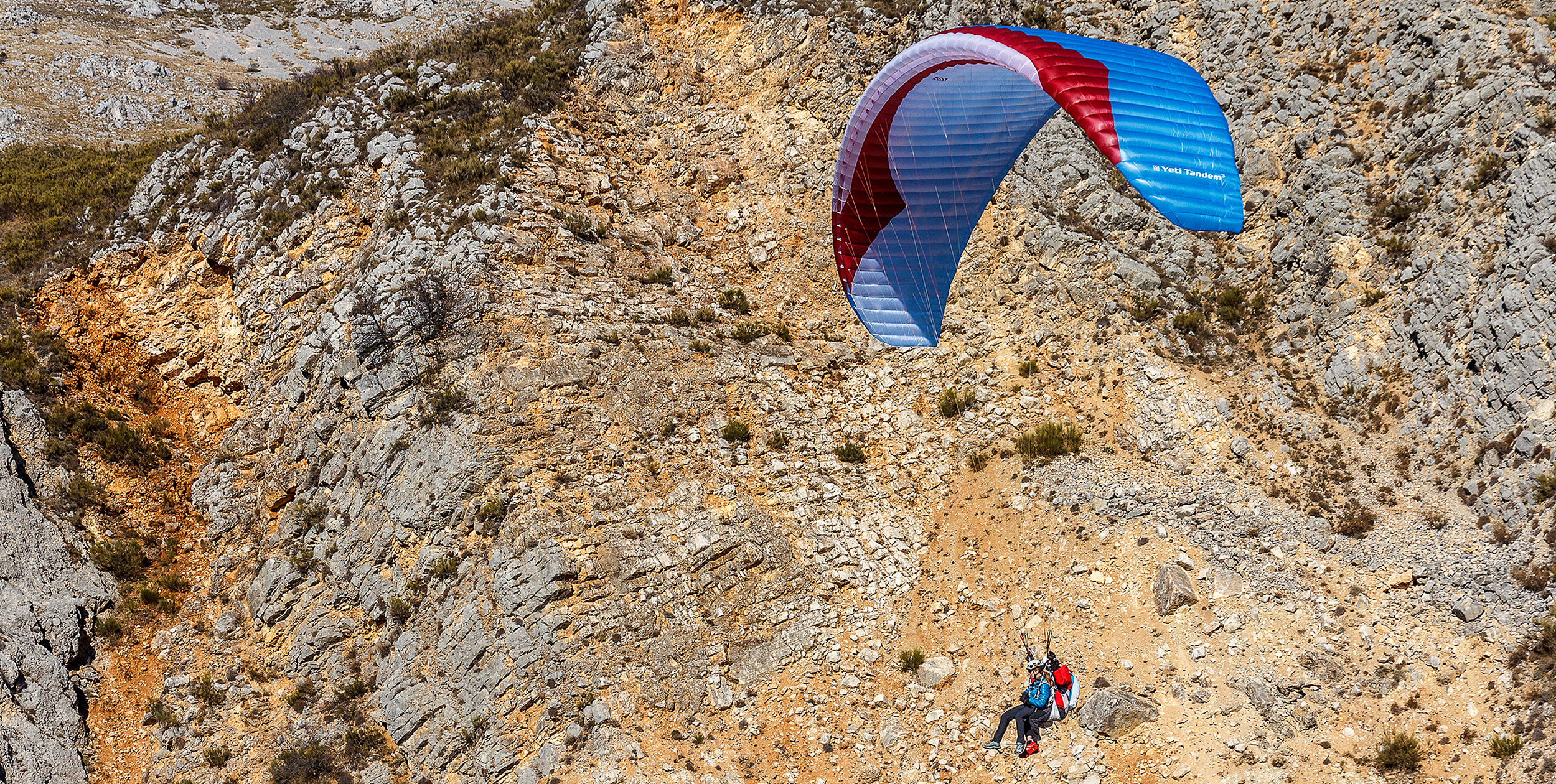
Gin Yeti Tandem 3 review
13 June, 2022Marcus King goes hike-and-fly with Gin’s updated lightweight tandem.
This is the third version of Gin’s lightweight glider for two, the Yeti Tandem. The first was released more than a decade ago in one size, 37m². Today the Yeti Tandem 3 comes in two sizes, 37m² and 41m². The extra size was added in June 2020 and, following a year lost to the pandemic, this is the one we were sent to try last year.
The 37 weighs 4.8kg and has a weight range of 90kg to 190kg, a big advantage if you want to fly with young children, but still capable of carrying heavier loads for hike-and-fly. The 41 weighs just 600g more at 5.4kg and has a weight range of 120kg to 208kg.
Paired with Neo’s Reserve Backpack and a couple of string harnesses either size makes for a light enough pack for hike-and-fly trips, and this was the set-up we flew with for the review.
Design and build
Look at the specs and you’ll see there is not a lot of difference between the Yeti Tandem 3 and Gin’s full-fat Fuse 3 tandem. Same cell count (49), flat aspect ratio (5.35) and surface area.
Gin’s Yeray González confirmed they used the Fuse 3 as a base, “but then we had to retrim and adjust the tensioning of the wing as the materials have different characteristics. The internal structure is different and this saves weight.”
At 49 the cell count is a bit lower than some full-fat tandems but higher than hike-and-fly tandems such as the Ozone Wisp, which has 40 cells. The wing has a sharknose design – Gin’s Equalised Pressure Technology – with 3D shaping and mini-ribs. Fabric used is Porcher 27 with Porcher 32 at the leading edge for more durability.
Our wing was supplied with the optional 20mm webbing risers. These weigh 180g more than the lighter Dyneema ones, but are easier to handle and a bit more reassuring for passengers.
The line-set is unsheathed with the exception of the brake lines. The unsheathed lines are a uniform brown, apart from the red stabilo. There is some coloured sheathing where the lines attach to the maillons to help identification though, and the risers also have some colour coding.
The brakes are attached with Gin’s standard shaped magnets, which are pretty secure. One minor gripe is the end of the trimmer webbing is parked using two of the male magnets: I found they got easily separated and then the end of the trimmer would want to attach to the brake keeper. The trimmers have around 10cm of travel and the neutral point is marked. The big-ears system from the Fuse is missing and the risers are very clean.
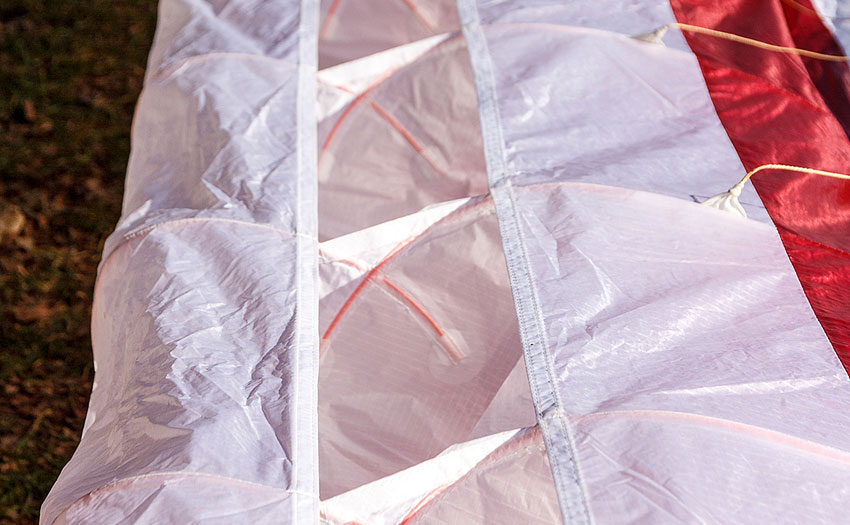
Launch behaviour
It is really easy to launch, coming up smoothly and easily without racing overhead – no overshooting – to sit comfortably above. As with all wings made from lightweight material though it readily inflates, so does need to be held down in stronger winds.
Lift is generated nice and quickly, lifting you off your feet in a few steps. My passenger reported I said, “Run, run … oh we’re off” as I was surprised by the shortness of our run on a light day.
With a hike-and-fly glider it’s important that launch behaviour is good as terrain underfoot often won’t be perfect. The Yeti Tandem 3’s fits the brief perfectly.
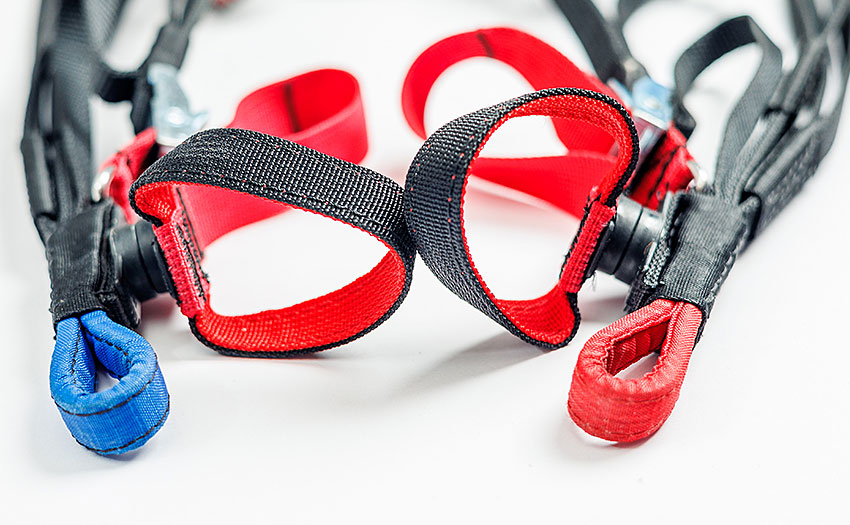
In flight
My first flight was from a high launch on a stable winter’s day. As we flew close to the cliffs searching for lift, I was impressed with the feel and agility of the wing through the brakes. It reacts quickly to inputs and it is easy to place it just where you want.
Finding lift I kicked in a couple of tight S-turns to stay in the lift before we could 360. The wing responded quickly, changing direction without hesitation. With a little height I was able to bank the wing round easily in the core. It felt composed and efficient with us climbing away from the solo wings.
Brake pressure won’t tire your arms quickly. This is a wing you can keep thermalling all day. Playing with the trimmers I found slowing the wing makes it a bit more sluggish in turns – I preferred the agility of the neutral position for working lift. On glides there is quite a large amount of positive trim you can add to speed up the wing, all safe in the knowledge it retains its EN-B rating across the range. (Size 37 is EN A, 41 is EN B.)
The Yeti Tandem 3 has a playful dynamic side too. Wingovers are easy to build and spirals easy to control. If you want to lose height more sedately then big ears are easy but you will need to hold them in.
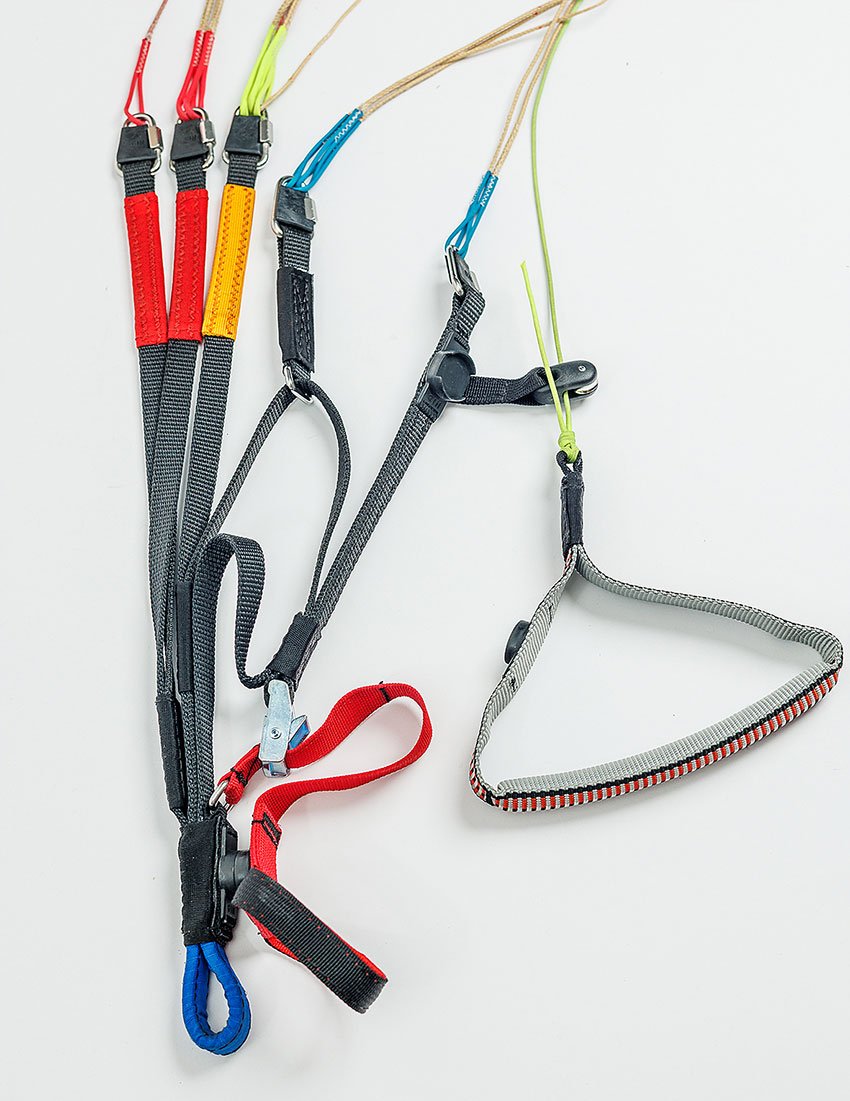
Landing
The reactive brakes make landing a doddle, not only in positioning for final approach but flaring with the wing reacting well. It is also possible to slow the wing progressively on approach with plenty of brake travel and good low-speed behaviour, important if you want to land out on a tandem vol-biv adventure.
The verdict
While single-surface tandems with their ultra-compact packing and light weight are a great choice for para-alpinism, the Yeti Tandem 3 is light enough for hike-and-fly trips and has plenty of performance for when you want to go XC.
The high level of passive safety and low weight make it a good option for tandem vol-biv. It may lack the top-end performance of some full-weight tandems but it is an easy-to-use package that will absorb the bumps and allow you to land out comfortably.
The larger size allows for commercial pilots who fly with larger passengers, and with its wide weight range the smaller version is perfect for leisure pilots looking to fly with kids and friends.
Manufacturer’s specifications
Gin say: “An ultralight tandem glider, suitable not just for hike-and-fly adventures, but also for fun flights with family and friends and even commercial flights.”
Use: Hike-and-fly, XC and commercial tandems
Pilot level: Tandem-rated pilots
Sizes: 37, 41
Flat area (m²): 37, 40.95
Weight (kg): 4.8, 5.4 (with Dyneema risers)
Take-off weight (kg): 90-190, 120-208
Cells: 49
Flat aspect ratio: 5.35
Certification: EN/LTF A (37) B (41)
Published in issue 228 (April 2022)

